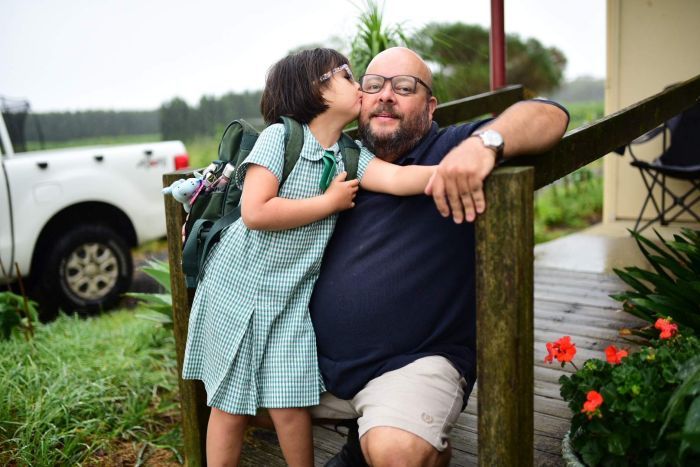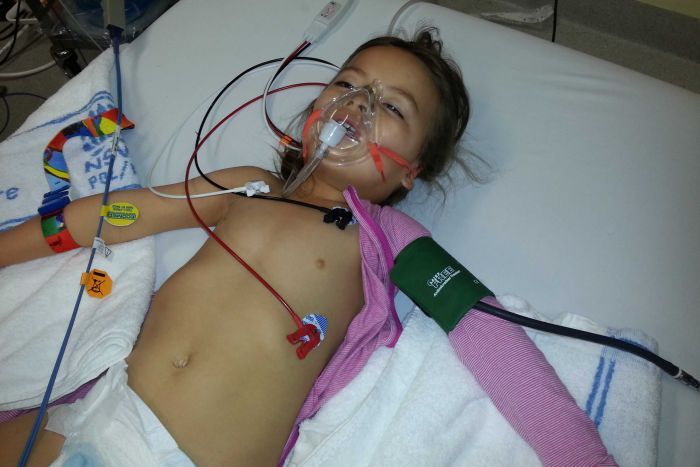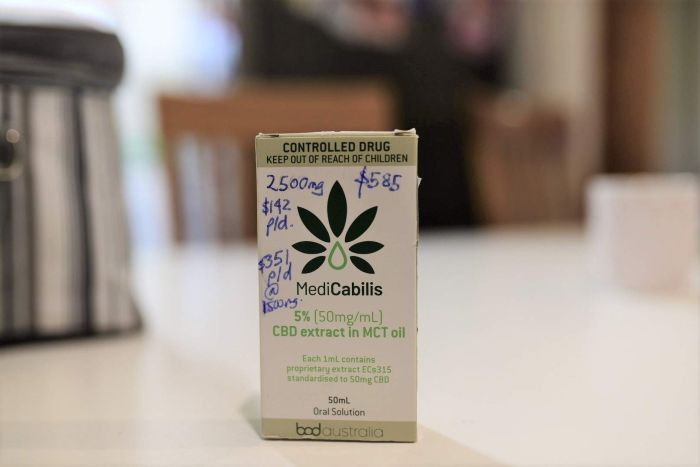Australian father pushed into the black market for medical cannabis to help epileptic daughter
- Katelyn Lambert used to suffer seizures lasting hours
- Her father refused to watch her suffer, turning to the black market for medical cannabis
- Katelyn now only suffers one seizure a year on average
- 3,000 medical cannabis prescriptions were approved by the Australian Government between March 2018 – January 2019
- Estimates suggest over 100,000 Australians turn to the black market for medical cannabis every year
Despite medical cannabis being legally available in Australia, hundreds of thousands of desperate patients are turning to the black market to acquire the medication they need.
One of those is brave parent Michael Lambert, who decided that breaking the law, risking his freedom, was a small price to pay to help ease his epileptic daughter’s suffering.
Katelyn, 7, was diagnosed with a drug-resistant form of epilepsy, Dravet Syndrome, as a child. Her family were told there was only a one-in-six chance she would live to see 18.
Katelyn was suffering a life-threatening seizure every 15-20 seconds, lasting for hours, when she was just 11 months old.
Now aged seven, she only suffers, on average, one seizure a year.

Michael attributes this amazing turnaround to medical cannabis, which he has been providing to her for the past five years. Even Katelyn’s doctors are acknowledging the amazing progress.
Just five drops a day of cannabis oil acquired illegally from the black market has been enough to bring Katelyn a vastly improved quality of life.
ABC also revealed that more than 3,000 medicinal cannabis scripts have been approved by the Therapeutic Goods Administration (TGA) from March 2018 to January 2019, so why are families like the Lamberts forced to turn to the black market for life-saving medication?
In a similar situation to the UK, Australian medical cannabis patients are in legal limbo.
Cannabis, like in the UK is de jure legal for medical purposes. In reality, only a few, rare medical conditions qualify for cannabis prescriptions. Those who qualify then face an uphill struggle to afford the costly prescriptions.
Iain McGregor, a psychopharmacologist at the Lambert Initiative For Cannabinoid Therapeutics at Sydney University, estimates 100,000s of Australians are using illegal cannabis for medical problems.

To try and tackle the ever-growing backlog of patients demanding legal access to medical cannabis, the Australian Government announced a streamlined application process for medicinal cannabis last year, which would allow approved patients to get access to the drug in 48 hours.
Speaking to the Australian news network, ABC, Michael challenged the claims that the process for applying for medical cannabis had been made easier:
“Everybody knows from the Health Minister to the Prime Minister, I wrote to them all, I begged for help.
“They told me, ‘We’re going to come up with a solution, just hang in tight’, but I’m worried that the next package is not going to arrive, that my daughter’s going to get electrocuted to death in front of me, because she’s missing the most vital ingredient in her medicines.”
There are three legal routes patients can take to legally access medical cannabis in Australia:
1: Clinical trial
Patients can apply to participate in a clinical trial to help study the potential medical applications of cannabinoids.
Researchers in New South Wales are currently investigating cannabinoid-treatment on children with drug-resistant epilepsy.
However, limited spots mean only around 100 children have been accepted onto the trial. Unfortunately, Katelyn was not on the list.
2: Find an Authorised Prescriber (AP)
Doctors who are APs can prescribe specific cannabinoid medications.
The process of becoming an AP is notoriously difficult, as medical practitioners must gain approval from the Therapeutic Goods Association (TGA), obtain endorsement from an ethics committee, check for additional state or territory requirements, and finally, provide the drug supplier their authorisation.
This is a largely untenable option for many patients hoping to acquire medical cannabis prescriptions as privacy laws in Australia prevent people from searching for an AP.
3: Special Access Scheme (SAS)
The SAS allows doctors in most Australian states and territories to apply for Commonwealth and state approval in an online application.
However, most patients are finding it impossible to find a doctor willing to go through this process. Experts believe a lack of willingness from doctors is the cause of this unwillingness.
“We have not educated our GPs, the medical schools don’t know enough about [medical cannabis]… at the moment it’s pretty raw, it’s early days.”
– Dr Sanjay Nijhawan from Cannabis Access Clinics
Speaking to ABC, Dr Sanjay Nijhawan from Cannabis Access Clinics, said a lack of awareness had discouraged doctors from engaging with it:
“We have not educated our GPs, the medical schools don’t know enough about it… at the moment it’s pretty raw, it’s early days.”
This is the current route Michael has taken to get his child legal access to medical cannabis, but the high cost of the prescription makes this an untenable option in the long-term.
Katelyn’s current dose of MediCabilis had been obtained through the SAS and did not come cheap.

A bottle which would last Katelyn four days cost $585.
Michael explained why the high cost of this legal prescription could force him to return to the cheaper black market:
“The minimum dose recommended on the bottle is $140 a day and I can get it [for] $7.50 a day on the black market.
“I’ve got three choices — don’t give it to her and injure her, keep breaking the law or what extra job am I going to get to pay for it?”
